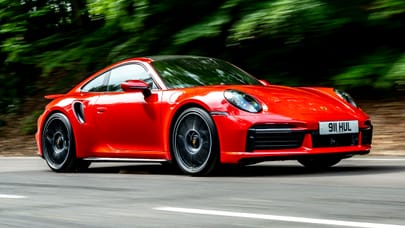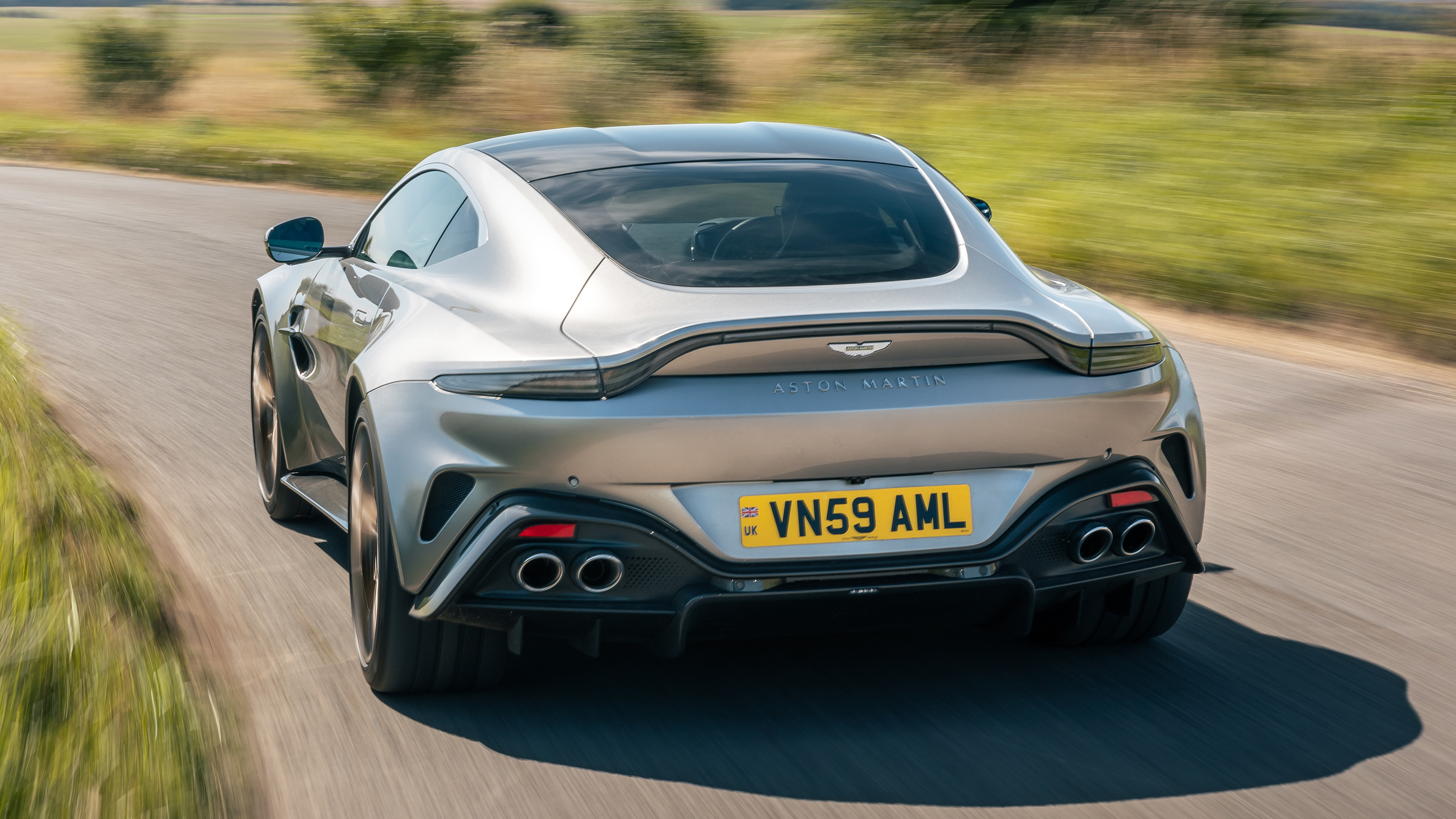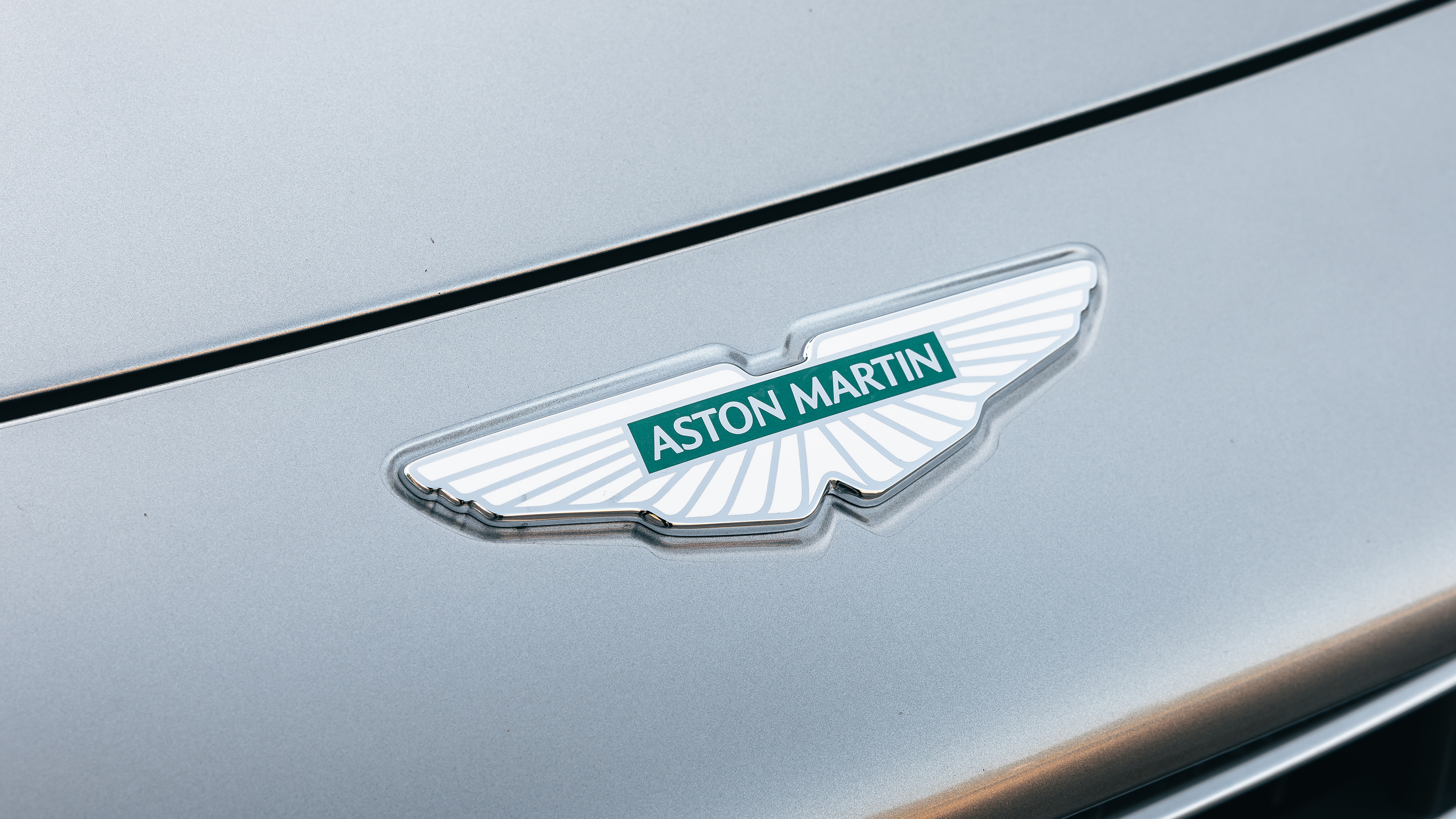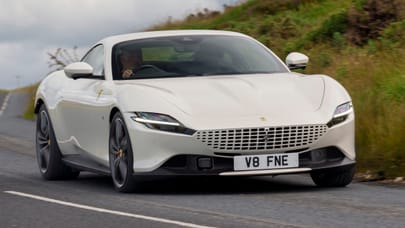
Good stuff
Sophisticated dynamics but old-school thrills, massively improved driving environment, silly performance
Bad stuff
Feels wide on the road, body control loose on rough surfaces. Oh, where’s the manual ‘box?
Overview
What is it?
The Aston Martin Vantage is a mid-sized electric SUV with a range of… oh wait. Nope. Not that at all. It’s a Vantage. Just like the old Vantage, similar to the one before that and - we hope and pray - not too dissimilar to the next one to come over the horizon several years from now. So, this is Aston Martin’s sports car. Compact, powered by a 4.0-litre twin-turbocharged V8 driving the rear wheels and, according to Aston Martin, ‘engineered for real drivers.’
So it’s a more hardcore proposition than the DB12, which leans towards the long-legged Gran Turismo ideals, and lives in the sphere of influence probably defined by the Porsche 911 Turbo. It costs £165,000 – right between the Turbo and Turbo S – and to justify that lofty price tag (over £20,000 more even than the old limited edition Vantage F1 edition), Aston Martin has thrown everything at this radical overhaul.
Radical? But it looks, um, almost the same?
Well, yeah. But no. It’s unmistakably an Aston Martin Vantage but the new One-77 inspired front-end looks superb and in turn that pales alongside the achingly pretty profile view and muscular arches. Over and above other Astons there’s something very sophisticated about the surfacing of this car. The wider yet leaner contours give it a real sense of sinister aggression.
The interior, very similar to the DB12’s, is also a giant leap on. Previously, the Vantage felt hand-built in a charming and slightly wonky way. Now, it’s just really lovely and feels bespoke and classy. The optional carbon fibre sports seats are pretty cool, too. That’s one box we’d tick.
But never mind the aesthetic for a moment, because the engineering here is radically improved. The headline numbers are impressive. Maximum power from the AMG-sourced 4.0-litre twin-turbocharged V8 is a mighty 656bhp at 6,000rpm and 590lb ft from 2,750-6,000rpm. That’s a 30 per cent increase in power from its 503bhp predecessor! Aston’s baby now does 202mph and 0-60mph in 3.4 seconds.
So it’s a hot rod?
Our expectation was for just that. Lots of tyre smoke, some good ol’ fashioned hooliganism and all that lovely feel-good Aston Martin blue-blood stuff to underpin the experience. However, the dynamics are a great deal more sophisticated than we’d expected. Aston has adopted plenty of tech in search of the sort of deep-seated poise you’d expect from the likes of Porsche and Ferrari.
So, there are new electronically adjustable Bilstein DTX dampers (as seen on the Porsche 992), a new Adjustable Traction Control system with eight settings from mild to wild, a fully integrated e-diff for the eight-speed transaxle automatic gearbox (now with a shorter final drive and faster shifting), bespoke Michelin tyres with a much bigger footprint and lots more.
Plus, the aluminium chassis is considerably stiffer to ensure every input from the driver is relayed more cleanly to the contact patch. Even the NVH coupling for the steering column has been removed to improve feedback and precision. Aston Martin claims the chassis and control systems have stepped up to match the increase in power.
Would you have it over a 911 Turbo, then?
Well, hold on. Just like the new Vantage itself, this is a nuanced issue and we wouldn’t be so binary as to throw out a clickbait ‘Aston drubs Porsche!’ headline. The good stuff? Well, just being around the car has a greater sense of occasion than, for example, a 911 Turbo. It really does look and feel special and climbing in doesn’t immediately kill the vibe. The new Aston Martin infotainment system is clean and functional, the quality of materials is top notch and the architecture really does feel a cut above.
We’re not going to wax lyrical about touchscreens and mood lighting, but suffice to say its low, cocooned driving position, gorgeous flat-bottomed steering wheel and the carbon fibre, leather and alcantara really whet the appetite before you even ignite that twin-turbo V8.
On the move things remain pretty damn exciting. It’s hard to convey the sense of endless power and general goodness that exudes from the Vantage but after a few minutes you find yourself saying things like ‘phwoar’ and ‘oooo’ and ‘oh hell yeah.’ There’s just something about being connected to a stonking V8 that drives the rear wheels that inspires awe and wonder.
However, even in Comfort mode the Vantage certainly has a sense of edge. On ultra-smooth Spanish roads the ride feels firm but beautifully controlled with a lovely sense of the dampers rounding off little lumps and bumps in one, decisive movement. However, on more craggy UK tarmac the car feels a bit different, with body control struggling to keep pace with the pace 656bhp is able to deliver. Meanwhile, even on track the aptly-named Track mode actually proved too stiff, the car hopping and skipping over any little ripples in the surface. Luckily there’s a Sport and Individual mode, so you can play around with settings until you find the sweet spot.
In other words, it’s pretty hardcore?
Yeah, but that doesn’t mean it’s spiky or evil. In fact, on the road the balance is really lovely. Understeer isn’t an issue with 275-section front tyres but all that torque is a workout even for the fat 325s at the rear. The crisp, sharp front end means you can pour the Vantage into corners with real confidence and adjust its balance with power as well as steering. We’re not talking silly oversteer angles here, but rather a feeling that the Vantage is alive to your inputs and has real agility.
On track physics is inescapable and you’ll find some understeer in slower corners simply because the Vantage weighs 1,605kg dry even with the lightest options fitted (carbon ceramic brakes, carbon fibre sports seats etc). And, of course, it will burn up its rear Michelins faster than a French mob being told they can’t claim a pension until the age of 33 should you turn off the traction control.
It doesn’t transform into a stunningly precise and outrageously fast track car like a 911 Turbo. But it’s fun in a lurid way and even when you’re trying to be neat and tidy it always errs towards oversteer in medium and fast corners, which certainly keeps you alert. Plus, the Adjustable Traction Control system – selected by turning off the DSC stability control – is fantastic, allowing you to creep towards the car’s ultimate limits bit-by-bit.
So what’s the bad news?
If you want to nit-pick there’s no question that Porsche’s PDK gearbox is superior in every way. Plus, having the option of rear seats in the Porsche adds flexibility and come a rainy winter’s day the 911 Turbo would disappear into the distance at a rate of knots. The Porsche remains the ultimate all-rounder.
Oh, and the gear indicator on the instrument binnacle is criminally small. The Vantage is all about engagement but you can’t ever tell what gear you’re in when manual mode is selected… how did that get through!? And yes, we are duty bound to bemoan the lack of a manual gearbox. It would really suit the character of the car.
What's the verdict?
Chasing raw performance is a fool’s errand in the world of superpowered EVs, so Aston Martin’s determination to always have class-leading power seems a bit of a dead-end. However, when it’s done in conjunction with a clear focus on driving dynamics through a combination of old-school engineering (check out the rear strut brace, for example) and adopting superb hardware and software, then our concerns start to melt away.
In short, the Vantage is a significant improvement on the last generation Vantage. That came out in 2018 and was a bit of a pulled punch. A people pleaser with a more restrained character, it failed to stand out when we tested it against 911, 570GT and AMG GT R. The thumping extra power, sharper nose and hot-rod feel of this new version gives it an edge denied to its predecessor.
Does it ultimately have the breadth of ability of a Porsche 911 Turbo? No. And maybe even a ‘lowly’ Carrera GTS would eat it up around the Nürburgring. Yet on the road – y’know, where you spend 99.9 per cent of your time - it’s precise, exciting and feels special even when you’re just dawdling along. This is Aston rediscovering its mojo.
The Rivals
Trending this week
- Car Review
BMW iX3








